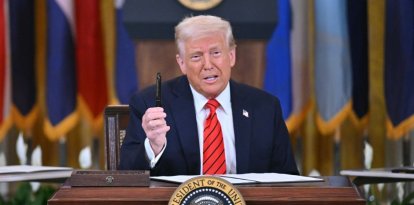TRADE TARIFFS
Tariffs on steel and aluminum take effect
The implementation, without exceptions, of a 25% levy on imports of both products marks another step in the escalation of the trade war.

Steel forge.
The trade war shows no signs of slowing down. The implementation of 25% tariffs on all steel and aluminum imports to the United States marks a significant escalation, signaling that the Trump administration is not bluffing in its policy of reshaping the global economy with U.S. interests at the forefront.
The activation of the new levies does not exempt Mexico and Canada, countries with which the Trump administration is currently negotiating due to the imposition of new tariffs on products arriving from these nations into U.S. markets.
Tariffs that particularly hurt Canada
The fire caused by the excessive electricity costs unilaterally imposed by the Premier of Ontario on energy exported to Michigan, Minnesota, and New York has barely been extinguished, and once again, the tense relations between Canada and the United States are being put to the test. This is particularly significant as Canada supplies 50% of the aluminum and 20% of the total steel imported by the U.S., according to data from the consulting firm EY-Parthenon, as reported by AFP.
The consultancy also notes that, in the case of aluminum, countries such as the United Arab Emirates, South Korea, Bahrain, and China, which account for between 3% and 6% of U.S. imports, will also be affected. Additionally, Brazil, India, Argentina, and Mexico, though at a lower percentage, also supply aluminum to U.S. factories.
The U.S. imports almost half of the steel and aluminum it uses
In the steel sector, Brazil (17% of imports) and Mexico (10%) will be the most affected after Canada. They are followed by South Korea, Germany, and Japan.
The United States imports approximately half of the steel and aluminum used across various industries, including automotive, aerospace, petrochemicals, and consumer goods like canned products.
RECOMMENDATION





















